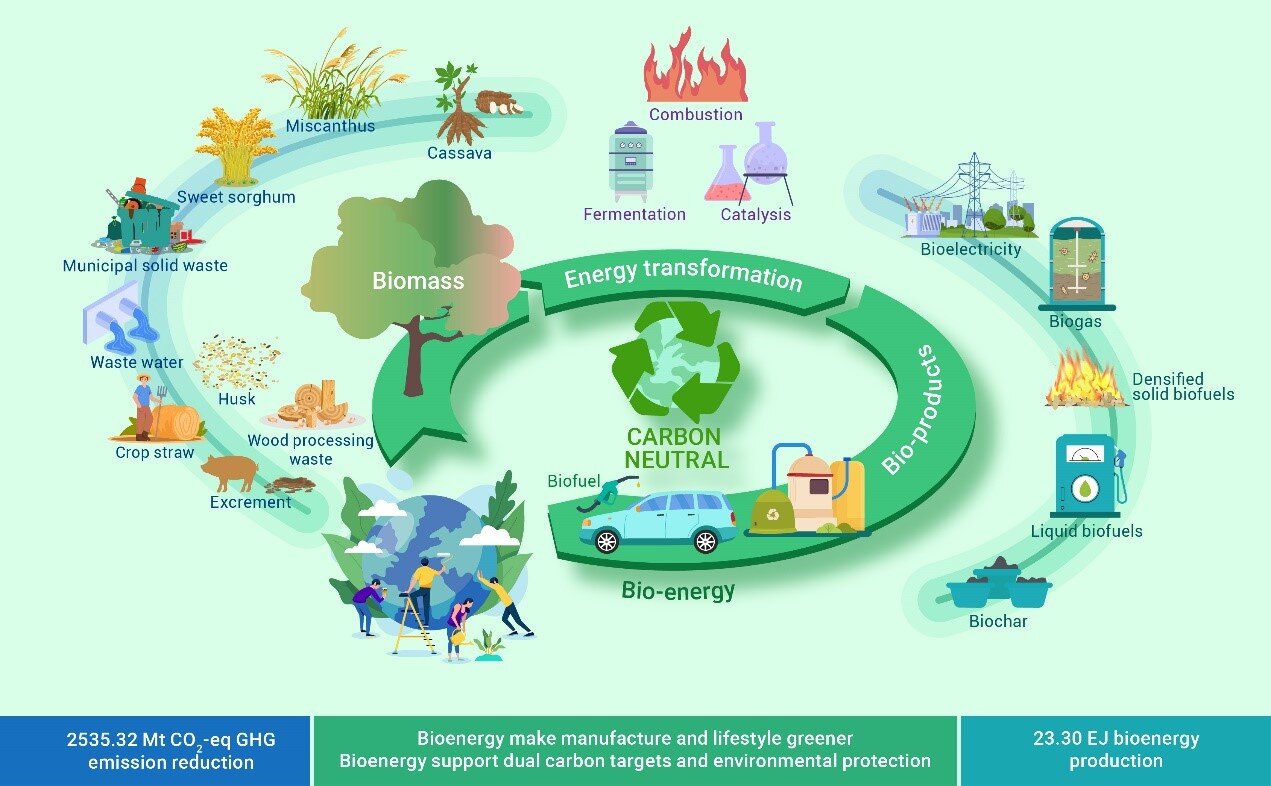Biomass energy is a type of renewable energy that is stored within biomass through photosynthesis. It is the only carbon source that is renewable. China has abundant biomass resources, and previous studies have emphasized the potential energy use of biomass resources in China. However, there has been no systematic study of energy conservation and carbon reduction for biomass through multi-source and multi-path energy conversion.
Research Findings
A joint research team consisting of Professors Xi Fengming, Fu Jingying, and Wang Feng from various institutes of the Chinese Academy of Sciences has constructed a comprehensive bioenergy accounting model. This model uses multi-dimensional analysis, including spatial analysis, life-cycle analysis, and multi-path analysis.
The team evaluated China’s bioenergy production and carbon emission reduction potentials using this accounting model. The results were published in The Innovation on April 13th.
The team found that China has recoverable biomass resources of 49.09 EJ yr-1, primarily from organic waste (63.465%) and energy plants on marginal land (35.64%). The potential for energy use, excluding other uses and losses of biomass, is about 29.73 EJ.
Through efficient energy conversion, clean bioenergy production is 23.30 EJ, accounting for approximately 19% of China’s total primary energy production. The corresponding carbon reduction potential is 2535.32 Mt CO2-eq, accounting for about 25% of China’s carbon emissions.
The team suggests prioritizing provinces rich in biomass resources, such as Guangxi, Sichuan, and Jiangsu, to optimize biomass development. Additionally, attention should be paid to bioelectricity, as it is an effective substitute for conventional counterparts in terms of energy conservation and emission reduction.
This study reveals the energy conservation and carbon reduction benefits of multi-approach biomass energy utilization toward carbon neutrality. The findings provide important data support for the establishment of China’s clean energy structural system and the realization of carbon neutrality goals.



Leave a Reply